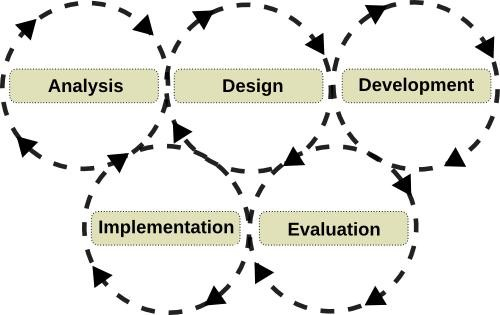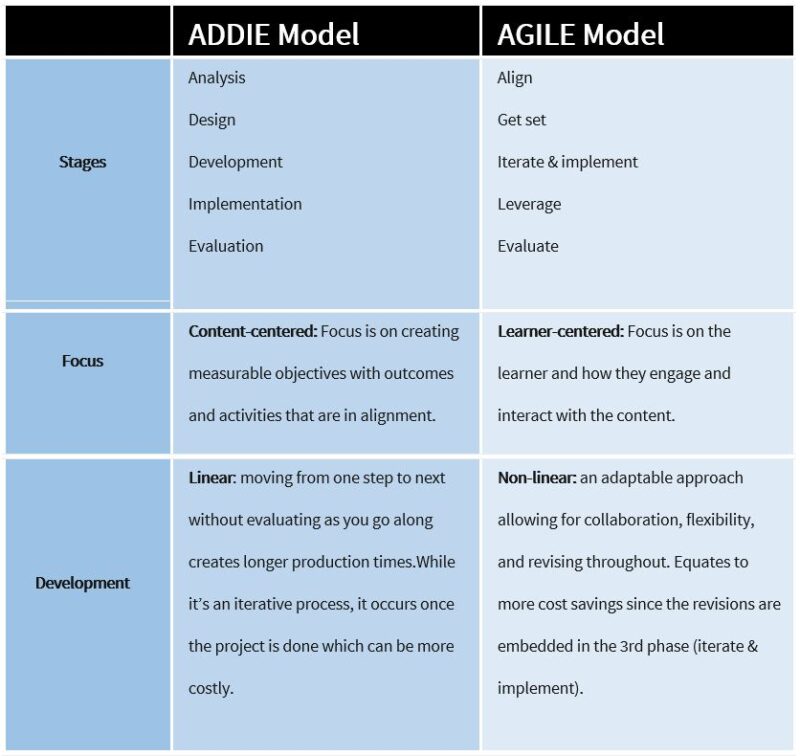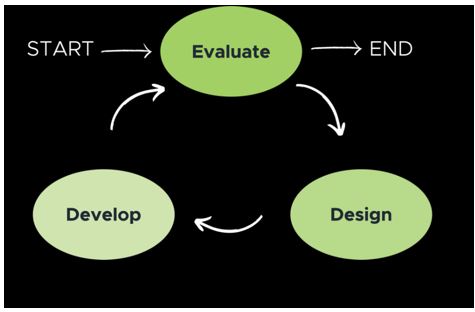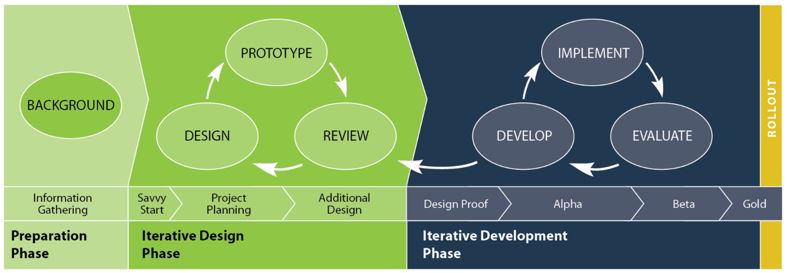There are times when the tried and true is no longer the “best practice” that it may have been in the past. A good example is ADDIE (Analysis, Design, Development, Implementation, Evaluation), the model that was the bedrock for most learning professionals for a very long time. Yes, there was a time when ADDIE was the absolute best approach for creating a course. But the traditional ADDIE model is simply not right for today’s training development.
And while ADDIE is the oldest and most popular, it isn’t the only traditional instruction design model that has been challenged with today’s just in time learning demands. Bloom’s Taxonomy, Gagne’s Nine Steps, Kemp’s Design Model, and the Dick & Carey Model are all tried and true approaches from the 20th century that must be adapted (or discarded) for modern workforce training.
So, what changed? Blame Google, smartphones, and YouTube. Our entire world has become accustomed to getting information at your fingertips just when you need it. We’ve literally offloaded a portion of our memory storage and cognitive processes to technology, which is an article for another time. Simply put, we as learning content developers rarely have the time and resources to wait for weeks (or even months) to build and release training, especially if it’s referential instead of foundational, because our clients need just in time learning.
Referential content means the learner already has some framework in place that the new learning augments. Foundational means the learner must build that framework. Here’s an example. User A currently works in Salesforce.com and wants to create a new report. User A has a framework already (working knowledge of Salesforce.com) and just needs to know the steps for creating the report. However, User B has just been hired and has never used Salesforce.com before. User B needs foundational training to learn Salesforce.com, thereby building a framework for later referential training. Make sense?
An awful lot of ongoing training is referential in nature and it’s far more important to have it ready and available when needed than to spend significant time on the structure and flow of that content. Save that development effort for foundational training projects where we must build the framework for the learners. We can dive deeper into this concept at another time.
For now, let’s quickly review the traditional ADDIE model, typically depicted as a waterfall method, with each phase complete or mostly complete before moving to the next phase.
ADDIE Model of Instructional Design Explained
As noted on Wikipedia: “In the ADDIE concept, each step has an outcome that feeds into the subsequent step.”

Traditional ADDIE Model
Most learning organizations simply do not have the time, resources, and flexibility to take a waterfall approach to developing content. Most of us in corporate training are faced with SMEs who have other priorities and little time left over, small budgets, tight deadlines, and a constant challenge to prove that the training we provide is timely and relevant to the business needs. Our process requires that we spend little time upfront on analysis and design so that we can get right into development.
Does this mean we forgo those first two phases? Absolutely not! Instead, the entire process is iterative and ongoing. Analysis continues to happen while we develop. Same thing with design. Even implementation can lead back to any of the other three phases. I can’t speak for everyone, but I believe you should “release early, release often” and continue to refine your product based on the feedback you get from stakeholders and learners.
And that product you release doesn’t have to be the end-all/be-all Cadillac of courses. That’s where many of us in the L&D field get bogged down… trying to create something grand and awe-inspiring. Instead, it’s important to understand the need first. It may be that a simple text-only solution or short explainer video directly from a SME will be just as effective while getting the content out far faster (and cheaper) than that carefully crafted online course.
Can ADDIE Framework be Agile?
Let’s chat about “iterative” and what that means exactly. Here’s an “Olympic rings” model that illustrates what I mean by iterative throughout the process:

Iterative ADDIE Model
This iterative ADDIE approach is far more agile. However, it is still focused on the content rather than the learner. Is that the right thing to do or should we throw out ADDIE altogether and start anew? ADDIE has worked well for most traditional projects but what about in organizations that are embracing agile project management? This is where several current methodologies make more sense.
First is the AGILE method, a project-oriented approach introduced by Conrad Gottfredson, shines. Like ADDIE, AGILE has five stages: Align, Get set, Iterate and implement, Leverage and Evaluate. In the table below, note the similarities and distinctions of the ADDIE and AGILE approaches to design.
ADDIE vs. Agile: How do the models compare?

What are Other Agile Instructional Design Methods?
Another agile instructional design model that I really like and use is the SAM (Successive Approximation Model) approach created by Dr. Michael Allen. What’s great is there are two variants of this model: SAM1 and SAM2. SAM1 is great for smaller projects while SAM2 works best for larger, more complex projects.
As noted on Dr. Allen’s website, SAM is an iterative prototyping model through which prototypes evolve into the final product. It works through small steps; frequently testing to assure work is proceeding on the right path. And it focuses far more on learning experiences, learner engagement, and learner motivation than it does on content organization, presentation of information, and summative post tests, although these latter components get full and adequate attention when and where appropriate. This basic approach (SAM1) is great for all those little learning projects that need to get done quickly.

For more complex projects, SAM2 is divided into three phases: Preparation, Iterative Design, and Iterative Development. Although introducing phases feels something like reverting to a waterfall and ADDIE-like approach with the liabilities and consequences such an approach carries, SAM2 preserves the creative power of iterations throughout while also offering a manageable structure for larger projects and multiple specialized teams.

The last agile methodology I’ll touch on is Scrum, an extremely popular approach to software development that has been adopted (and adapted) by quite a few learning organizations. Scrum projects function in cyclical processes called “sprints”, which range in length from 1 to 4 weeks. Each sprint focuses on creating one piece of a product, called a product iteration. The product pieces are organized by priority in a backlog, which determines the order in which the sprints are organized. Here’s some info from an elearningindustry.com article on using Scrum as an instructional design methodology.
Sprints ensure that the team can respond to evolving needs effectively. It helps them stay on top of goals and keeps the scope clearly defined. It also helps the team to maintain priorities.
Benefits of this include:
- Flexibility – short sprints can effectively respond and shift to evolving needs while keeping priorities straight. This means scrum can become a highly flexible development tool.
- Cost control – because teams are constantly evaluating scope, priorities, and time, they can make sure not to be distracted from the core needs of the project and keep development costs focused on what’s most important.
- Quality – one of the biggest scrum values is maintaining high quality. The reevaluation of priorities means resources are allocated to the most important parts of the project.
Scrum is a great methodology for learning development because it’s designed to tie the work process back to business opportunities and challenges. That’s something most C-suite executives want to see when investing in learning!
Now that you’re as agile as a squirrel dodging dogs, what’s next? You are now ready to dive into guerilla training, which we shall do in our next article!






